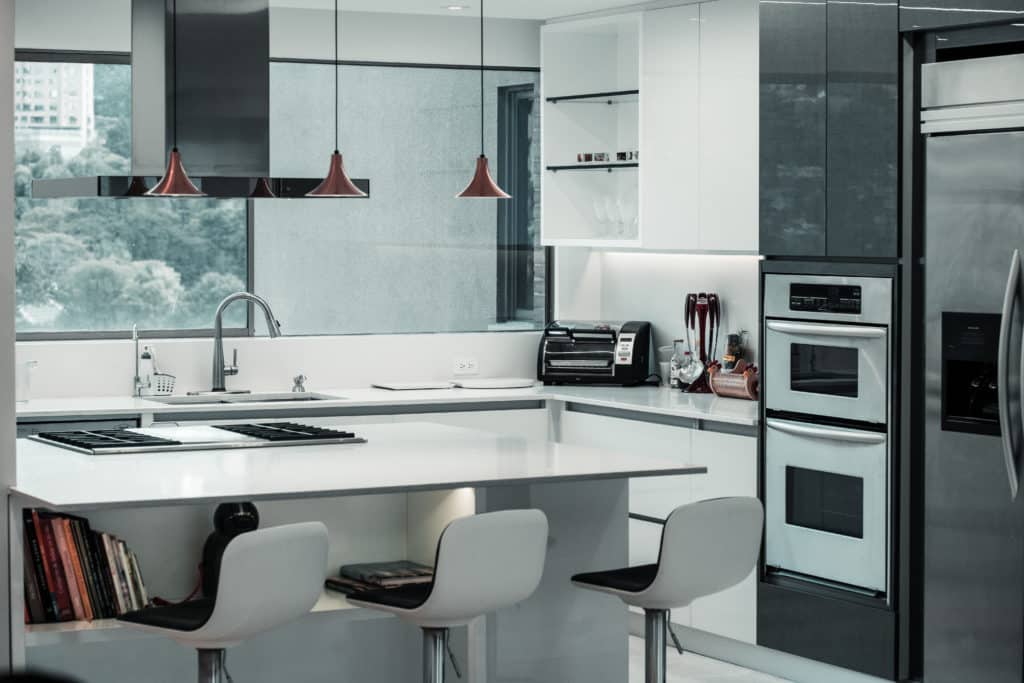
Granite countertops are pieces of art that come from a complicated fabrication process. Knowing where the counters are sourced and how they are created will help you appreciate the value of adding granite countertops to your home.
Sourcing the Granite
Granite is an igneous rock that is found in massive veins close to the Earth’s surface. Quarriers use a combination of drills and explosives to cut blocks and sheets of granite away from the surrounding land. Then, the stone is carefully shipped to a manufacturing location.
Most commercial granite comes from Brazil, India, China, and Italy. Italy is home to some of the oldest marble and granite quarries, and Italian businessmen can also be credited with kick starting the Brazilian stone industry. Most Italian stone sellers curate a selection from quarries around the globe. North America also has its own granite supply, with major deposits in Canada, New England, and Texas.
No two granite deposits look exactly alike. Quarries from different regions are valued for the unique colors and patterns they can provide. Because granite is so difficult to ship, the price will be impacted by your distance from the home quarry; that’s why you’ll often find a better deal if you buy local granite sourced from within the United States.
Polishing the Slabs
Granite blocks are shipped to fabrication facilities, where they can then be cut into slabs and polished to reveal their beautiful patterns. Modern fabricators typically use computer-guided machinery with diamond blades, saws, and polishing pads.
The quality and price of a granite slab are typically determined by its thickness. Thinner slabs break more easily, but they allow for the creation of more counters from a single granite block. The highest quality slabs are made from thick pieces of granite and are carefully checked for small chips or flaws.
Unpolished granite has a rough and dull appearance. The stone must be polished multiple times to show off the hidden pattern. Most fabricators only polish granite slabs on one side; this will be the top surface of the completed counter.
Finally, the polished slabs are purchased by stone distributors located in cities across the world. Contractors and homeowners visit these distributors to view their unique granite selection and find the perfect slab for their project.
Designing a Template
As the customer, you won’t actually need to tour a stone distributor until halfway through the granite-buying process. Your first step will be to schedule an in-home visit with a local fabricator and installer.
After an initial consultation, a member of your fabrication team will create a template of your kitchen. Digital measurements will be used to figure out the exact size that your counters need to be. Always make sure you’re done designing your kitchen before you have the counters installed; once the template is finished, your counter will be created exactly to the agreed-upon specifications.
While the fabricator is finalizing the template, you’ll be encouraged to tour a stone distributor and choose a unique granite slab. Larger kitchens may require two or even three slabs to create a finished counter.
Fabricating the Countertop
Equipped with a template, machinery, and years of experience, a fabrication professional will turn your chosen slab into the perfect counter for your home. This process involves cutting the stone and polishing the edges to create a finished piece.
Granite slabs are cut using diamond bladed machines and water-jet cutting technology. Skilled fabricators, like the team members at Washington Marble Works, always cut the stone in a way that shows off the unique pattern. If there is a particularly beautiful vein, you can expect to see it running through the center of your finished countertop. Connecting pieces are also cut so that the seam is as invisible as possible.
Once the pieces are cut into shape, the fabricator will bevel and polish the edges according to your specification. Machine polishers are used for most of this process, but the fabricator may use hand tools for the final touches.
The last step is to install the completed countertops in your home. The installation team will make sure everything fits correctly before applying adhesive and sealing the counters in place.
If you’d like to know more about how our counters are made, feel free to contact us with any questions. Washington Marble Works employs some of the most skilled and talented stone fabricators around. Reach out now to order a set of custom granite counters for your home.
